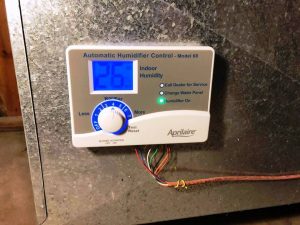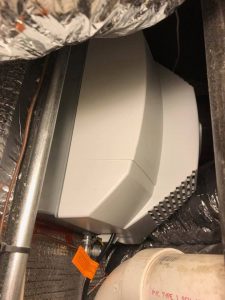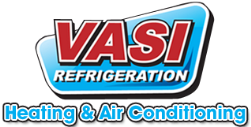
Humidifier and Indoor Air Quality
While most people use humidifiers to keep their home more comfortable and to keep their furniture and walls safe, what many of them don’t realize is that while bacteria, dust, mold and mildew like humid environments, many viruses thrive in drier environments. Being in a dry climate also makes most people more likely to get sick, so those viruses are extra trouble.
The health costs of dry air go even further, though. Air that’s below 30 percent humidity can also exacerbate allergies and asthma. So while it’s important to make sure that your home is dry and possibly use a dehumidifier during wetter seasons if it reaches above 50 percent, you may find that you need a humidifier during the winter to stay healthy.
Single Room Humidifiers
There are two different kinds of humidifiers and indoor air quality will likely vary depending on the kind you use. The kind of humidifier most people are familiar with is the single room, or portable, humidifier. When properly used, these can help protect your home and keep indoor air quality high, but they also come with a few negatives.
Perhaps the biggest problem with single room humidifiers is maintenance. You’ll likely have to fill the water reservoir daily, depending on the size of the system and the area you are humidifying.
It’s also easy for a portable standalone humidifier to become a breeding ground for bacteria, mold and mildew. When this happens, the humidifier transfers these pathogens and allergens throughout the room. This can be avoided by making sure to keep the humidifier clean. Also make sure that there’s no moisture building up around the unit, as this can be a sign that the humidity is too high.
Another drawback to single room humidifiers is that they create a lot of noise, about as much as a window air conditioner unit.
 Whole-House Humidifier
Whole-House Humidifier
Unlike single room humidifiers, which are small and portable, whole-house humidifiers are part of the home’s forced air heating system. They work to make sure the whole home is kept at the proper moisture level. They’re typically installed in the blower system, and once installed, they have a hassle-free operation. You don’t need to clean the whole-house humidifier like you need to clean a portable model, and it will automatically keep your house at the right moisture level as the heating system runs.
When it comes to humidifiers and indoor air quality, whole-house humidifiers are often the better choice. They’re less likely to become a breeding ground for bacteria, are easier to maintain, and they provide a more even job of humidifying your home.
Perhaps the only drawback of a whole-house humidifier is that mineral deposits can build up in the water. However, this can easily be taken care of by adding a diluted vinegar solution to the pan as part of your annual preventative HVAC maintenance. You’ll also need to have it installed by a licensed HVAC technician, unlike portable models, which can be purchased from the store and used out of the box.
